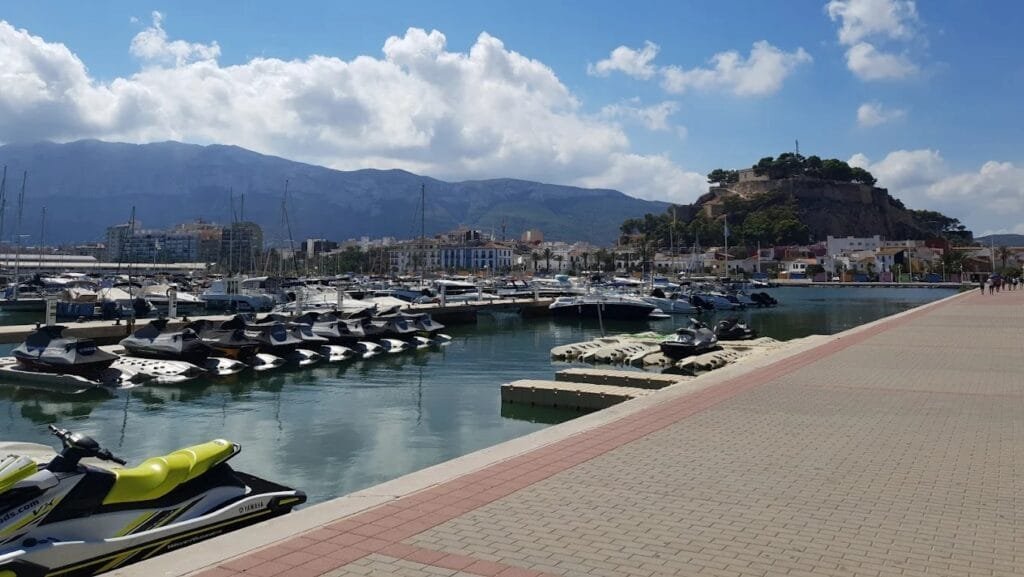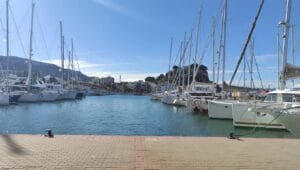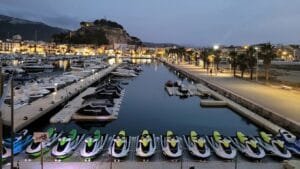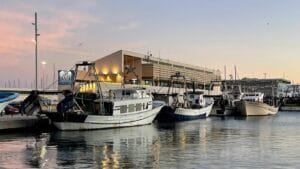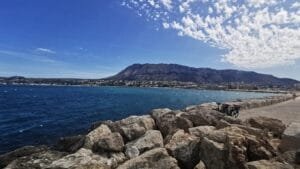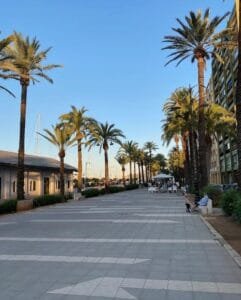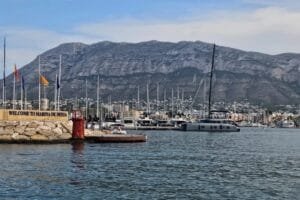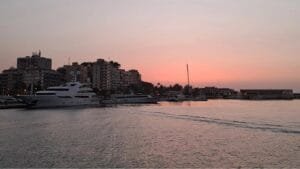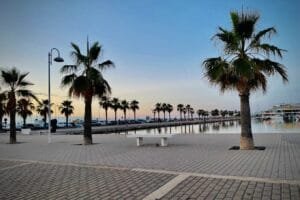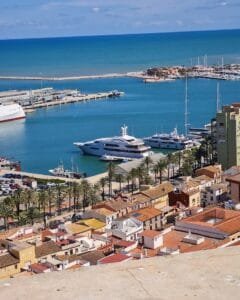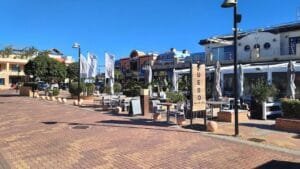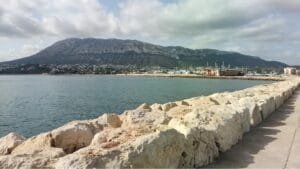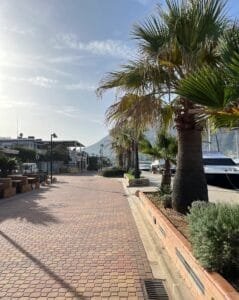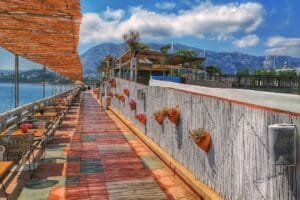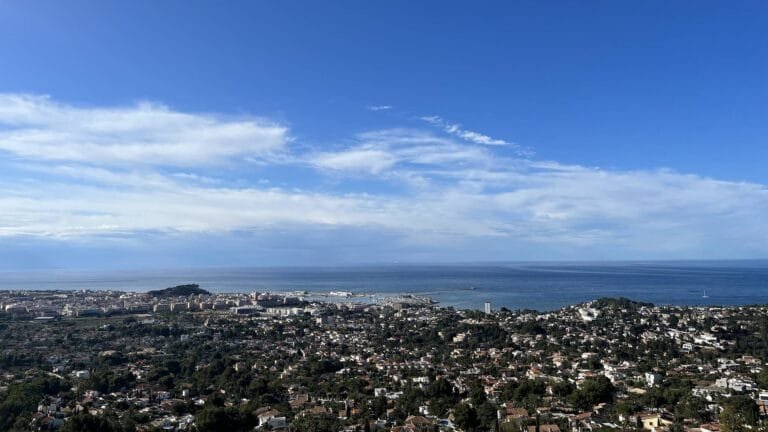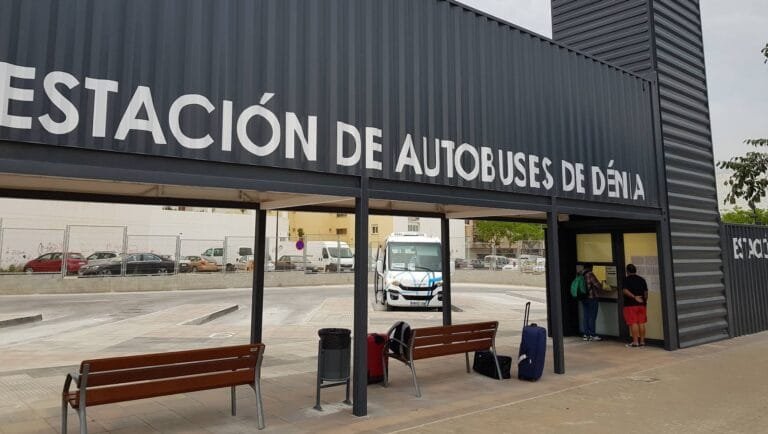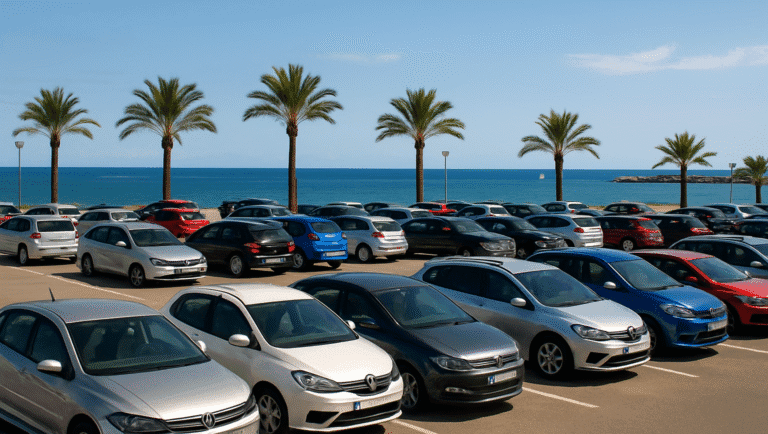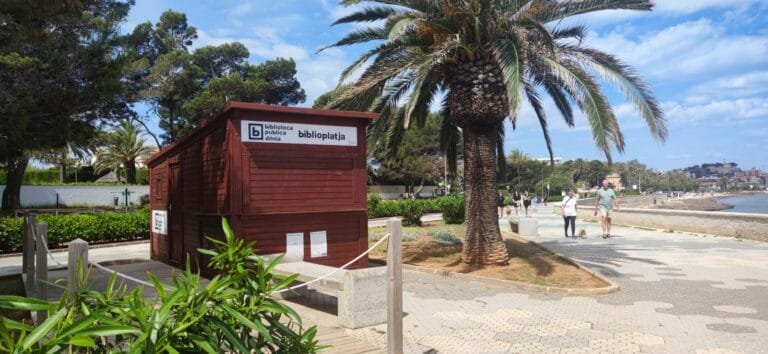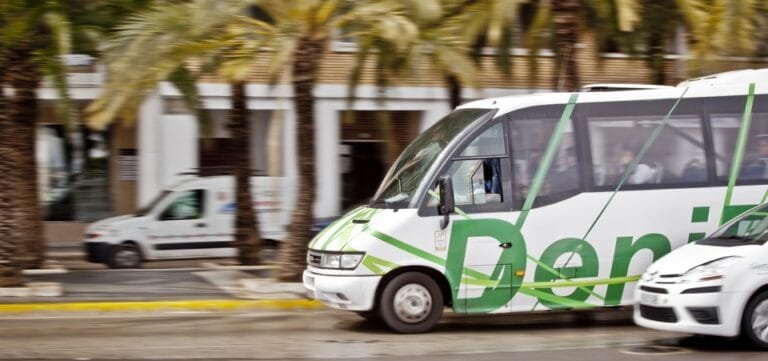Talking about the Port of Dénia is like talking about the very soul of this coastal town. Located in a privileged spot along the Mediterranean coastline, this port not only connects the mainland with the Balearic Islands but is also the heart of local life, tourism, gastronomy and Dénia’s history.
From the moment you set foot in this area, you can feel a mix of seafaring tradition and modern tourism that’s truly captivating. It’s no coincidence that so many travellers choose this place as their first contact with the town. Every time I come back, I feel as though I’m arriving at the true heart of Dénia.
From the ferries bound for Ibiza or Formentera to the craft markets and the promenades lined with luxury yachts, the port offers a truly special experience. In this article, I’ll guide you through every corner of this place, blending useful information with my own impressions so you can discover why the Port of Dénia is much more than just a port.
- A bit of history of the Port of Dénia
- The Muelle de Rivera and the Cervantes Esplanade: tourism, gastronomy and relaxation
- The living fishing tradition: the fish market and the auction hall
- Mollet d’Espanya and the Baix la Mar district: seafaring spirit and craftsmanship
- Marina El Portet: the most vibrant side of leisure
- Maritime Station: gateway to the Balearic Islands
- North Breakwater: the best views of Dénia and the Montgó
- Marina de Dénia and the Royal Yacht Club: high-level sailing
- Gastronomy, events and local life: beyond the sea
- Was this guide helpful? Share it and keep discovering Dénia!
A bit of history of the Port of Dénia
Dénia’s strategic location has made it, since ancient times, a key point for trade and fishing. For centuries, the port has been the natural link between Spain’s eastern coast and the Balearic archipelago. A port already existed here in Roman times, and during the Middle Ages it was fortified to defend against pirates and to promote trade with North Africa and other parts of the Mediterranean.
For centuries, the port was primarily a fishing and commercial hub, and it still preserves that essence today. However, in recent decades it has undergone a remarkable transformation. Thanks to a series of improvements and expansions, it has also become a first-class tourist and leisure port. The arrival of companies like Balearia and the modernisation of its infrastructure have positioned it as one of the most important ports in the Valencian Community.
And the best part is that, despite all these changes, the Port of Dénia has managed to keep its identity intact. That blend of old and new is precisely one of its greatest charms.
Map
Photos
The Muelle de Rivera and the Cervantes Esplanade: tourism, gastronomy and relaxation
One of the must-do walks begins at the Muelle de Rivera, once the docking place for fishing boats. Today, this stretch has been remodelled into a pedestrian promenade and transformed into one of the port’s most elegant and visited areas. Here you’ll find the most spectacular yachts moored, and the air is filled not only with the scent of the sea, but also with a touch of luxury.
Next to the Muelle de Rivera stands the Museo de la Mar (Maritime Museum), free to visit and full of history. It’s a space I definitely recommend, especially if you’re curious to learn how Dénia has evolved through its port activity. On one of my visits, I was fascinated by the models of old ships and documents showing what life in the port was like a hundred years ago. It’s one of those places that combine learning with charm.
Running parallel to the Muelle is the Cervantes Esplanade, a palm-lined promenade that begins where the famous Marqués de Campo street ends. It’s the perfect spot to sit on a terrace, enjoy a drink and soak up the atmosphere. Here, Dénia offers one of its greatest pleasures: its gastronomy. And if you’re in the mood for something sweet and a bit different, I highly recommend one of my personal favourites: El 5 y Pico, a small waffle and crêpe shop I never miss whenever I’m in the area.
At the end of the Esplanade there’s also a children’s playground, making this part of the port an ideal option for families too.
The living fishing tradition: the fish market and the auction hall
The fishing quay area preserves the most traditional spirit of the port. Every day, dozens of fishing boats return to unload their fresh catch. In the early afternoon, you can watch as the fishermen tie up their boats and unload their haul — a scene that feels straight out of another time.
One of the most authentic experiences is visiting the Lonja del Pòsit, where the freshly caught fish is sold. The market has two sides: one more professional, where regular buyers purchase the best produce at auction, and another open to the general public in the form of a fish market.
Opening hours vary depending on the season, but in summer you can usually visit between 5:30 and 9:00 p.m. It’s a real pleasure to see the stalls filled with octopus, cuttlefish, sea bream and the famous “peix de roca”, so typical of this area. I love this part of the port because it reminds you that, long before tourism, Dénia already lived by — and for — the sea.
Mollet d’Espanya and the Baix la Mar district: seafaring spirit and craftsmanship
Continuing the walk northwards, we reach the Mollet d’Espanya, an area with smaller moorings for small boats, where every summer the Hippie Market is set up. This market is one of my favourites: you can find handmade clothes, jewellery, costume pieces and craft items — all very typical of Dénia.
The Mollet runs parallel to the seafront of the Baix la Mar district, a charming area of low houses and narrow streets. This neighbourhood has always been closely linked to the port, and today it’s one of the liveliest spots for dining and nightlife. Its streets are full of bars, taverns, restaurants and pubs, making it hard to choose where to sit. Here, tradition meets modernity, and I assure you that dinner here with views of the port is one of the best plans you can make in Dénia.
Marina El Portet: the most vibrant side of leisure
Marina El Portet represents the port’s new identity: a modern area with moorings, nautical companies and leisure venues. From here you can rent anything from a jet ski to a catamaran, or simply enjoy dinner with views of Dénia.
This part of the port is full of nightlife during the summer: clubs, cocktail terraces, live concerts and a youthful atmosphere. Personally, I love walking through this area at sunset. The reflection of the sun on the boats, the view of Dénia Castle in the background and the sea breeze create a unique atmosphere. From here, Dénia looks different — more open, almost floating above the water.
Maritime Station: gateway to the Balearic Islands
The most strategic point of the port is undoubtedly the Maritime Station, managed by the Balearia company. This three-storey building serves as a logistics hub for the thousands of travellers who cross each year to Ibiza, Palma or Formentera. If you’re planning a getaway to the islands, this is your starting point.
Inside, you’ll find information desks, car hire companies and, of course, restaurants with views of the harbour. One of its charms is sitting on a terrace with a cold drink while watching the ferries come and go. It’s one of those places where you can truly feel Dénia’s heartbeat as a city open to the sea.
North Breakwater: the best views of Dénia and the Montgó
Many people think the walk ends at the Maritime Station, but it doesn’t. If you keep going, you’ll reach the North Breakwater, one of the port’s best-kept secrets. This promenade stretches out to sea and offers an unbeatable view of Dénia’s skyline, the Montgó Natural Park and the constant movement of boats.
Walking all the way to the end is an experience I always recommend. From here, you can watch the boats entering and leaving the port as if you were on board. You can even spot the beginning of Las Rotas and Las Marinas beaches. It’s one of my favourite spots to admire the city from another perspective — a perfect blend of nature and civilisation.
Marina de Dénia and the Royal Yacht Club: high-level sailing
Starting from the southern area, heading towards La Marineta Cassiana beach, you’ll reach another of the port’s main attractions: Marina de Dénia. This modern and well-maintained marina offers moorings for all kinds of boats and complete nautical services.
There’s also a pedestrian promenade that runs alongside the moorings, and another parallel to the sea that stretches all the way to the end of the southern breakwater. Along the way, you can admire the Montgó and the entire bay of La Marineta Cassiana beach — a view I always remember as one of Dénia’s most beautiful postcards.
This area also features restaurants, bars, and pubs, many with terraces overlooking the sea. It’s a perfect place both for a relaxing stroll and an elegant dinner. The Royal Yacht Club, meanwhile, hosts regattas and activities that fill the area with energy all year round.
Gastronomy, events and local life: beyond the sea
Beyond its docks and boats, Dénia’s port is a hub of local and cultural life. It hosts iconic events such as Bous a la Mar, one of the highlights of the local festivities — a blend of tradition, adrenaline and celebration.
And we can’t talk about the port without mentioning its gastronomy. From Dénia’s famous red prawn to seafood rice dishes and fresh fish straight from the market, this area is a paradise for food lovers.
No visit to the port is complete without enjoying a paella by the sea, buying fresh fish at the fish market, strolling through the craft stalls or simply taking in the atmosphere with a handmade ice cream during a sunset walk.
Was this guide helpful? Share it and keep discovering Dénia!
If this guide to Dénia’s port helped you plan your visit or revealed corners you didn’t know, I’d love for you to share it! Help more people experience Dénia from a new perspective. Whether on social media, via WhatsApp, or by sending it to someone planning a trip, this article could make a real difference in their journey.
And if you’d like to keep exploring the best of Dénia, here are some must-see pages I highly recommend:
🔗 Dénia Castle – The city’s main monument, offering spectacular views.
🔗 Maritime Museum – Discover Dénia’s seafaring history from the inside, right next to the port.
🔗 Where to park near Dénia’s port – Useful information so you can arrive and enjoy without worrying about your car.
Thanks for reading this far. See you at the port — or at the next stop on your Dénia adventure!

